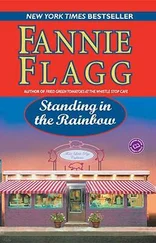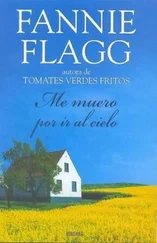Fannie Eckstorm - The Woodpeckers
Здесь есть возможность читать онлайн «Fannie Eckstorm - The Woodpeckers» — ознакомительный отрывок электронной книги совершенно бесплатно, а после прочтения отрывка купить полную версию. В некоторых случаях можно слушать аудио, скачать через торрент в формате fb2 и присутствует краткое содержание. Жанр: Природа и животные, foreign_antique, foreign_prose, на английском языке. Описание произведения, (предисловие) а так же отзывы посетителей доступны на портале библиотеки ЛибКат.
- Название:The Woodpeckers
- Автор:
- Жанр:
- Год:неизвестен
- ISBN:нет данных
- Рейтинг книги:3 / 5. Голосов: 1
-
Избранное:Добавить в избранное
- Отзывы:
-
Ваша оценка:
- 60
- 1
- 2
- 3
- 4
- 5
The Woodpeckers: краткое содержание, описание и аннотация
Предлагаем к чтению аннотацию, описание, краткое содержание или предисловие (зависит от того, что написал сам автор книги «The Woodpeckers»). Если вы не нашли необходимую информацию о книге — напишите в комментариях, мы постараемся отыскать её.
The Woodpeckers — читать онлайн ознакомительный отрывок
Ниже представлен текст книги, разбитый по страницам. Система сохранения места последней прочитанной страницы, позволяет с удобством читать онлайн бесплатно книгу «The Woodpeckers», без необходимости каждый раз заново искать на чём Вы остановились. Поставьте закладку, и сможете в любой момент перейти на страницу, на которой закончили чтение.
Интервал:
Закладка:
There is no cheerier spring sound, in our belated Northern season, than the quick, melodious rappings of the sapsucker from some dead ash limb high above the meadow. It is the best performance of its kind: he knows the capabilities of his instrument, and gets out of it all the music there is in it. Most if not all woodpeckers drum occasionally, but drumming is the special accomplishment of the sapsucker. He is easily first. In Maine, where they are abundant, they make the woods in springtime resound with their continual rapping. Early in April, before the trees are green with leaf, or the pussy-willows have lost their silky plumpness, when the early round-leafed yellow violet is cuddling among the brown, dead leaves, I hear the yellow-bellied sapsucker along the borders of the trout stream that winds down between the mountains. The dead branch of an elm-tree is his favorite perch, and there, elevated high above all the lower growth, he sits rolling forth a flood of sound like the tremolo of a great organ. Now he plays staccato, – detached, clear notes; and now, accelerating his time, he dashes through a few bars of impetuous hammerings. The woods reëcho with it; the mountains give it faintly back. Beneath him the ruffed grouse paces back and forth on his favorite mossy log before he raises the palpitating whirr of his drumming. A chickadee digging in a rotten limb pauses to spit out a mouthful of punky wood and the brown Vanessa , edged with yellow, first butterfly of the season, flutters by on rustling wings. So spring arrives in Maine, ushered in by the reveille of the sapsucker.
So ambitious is the sapsucker of the excellence of his performance that no instrument but the best will satisfy him. He is always experimenting, and will change his anvil for another as soon as he discovers one of superior resonance. They say he tries the tin pails of the maple-sugar makers to see if these will not give him a clearer note; that he drums on tin roofs and waterspouts till he loosens the solder and they come tumbling down. But usually he finds nothing so near his liking as a hard-wood branch, dead and barkless, the drier, the harder, the thinner, the finer grained, so much the better for his uses.
Deficient as they are in voice, the woodpeckers do not lack a musical ear. Mr. Burroughs tells us that a downy woodpecker of his acquaintance used to change his key by tapping on a knot an inch or two from his usual drumming place, thereby obtaining a higher note. Alternating between the two places, he gave to his music the charm of greater variety. The woodpeckers very quickly discover the superior conductivity of metals. In parts of the country where woodpeckers are more abundant than good drumming trees, a tin roof proves an almost irresistible attraction. A lightning-rod will sometimes draw them farther than it would an electric bolt; and a telegraph pole, with its tinkling glasses and ringing wires, gives them great satisfaction. If men did not put their singing poles in such public places, their music would be much more popular with the woodpeckers; but even now the birds often venture on the dangerous pastime and hammer you out a concord of sweet sounds from the mellow wood-notes, the clear peal of the glass, and the ringing overtones of the wires.
The flicker often telegraphs his love by tapping either on a forest tree or on some loose board of a barn or outhouse; but he has other ways of courting his lady. On fine spring mornings, late in April, I have seen them on a horizontal bough, the lady sitting quietly while her lover tried to win her approval by strange antics. Quite often there are two males displaying their charms in open rivalry, but once I saw them when the field was clear. If fine clothes made a gentleman, this brave wooer would have been first in all the land: for his golden wings and tail showed their glittering under side as he spread them; his scarlet headdress glowed like fire; his rump was radiantly white, not to speak of the jetty black of his other ornaments and the beautiful ground-colors of his body. He danced before his lady, showing her all these beauties, and perhaps boasting a little of his own good looks, though she was no less beautiful. He spread his wings and tail for her inspection; he bowed, to show his red crescent; he bridled, he stepped forward and back and sidewise with deep bows to his mistress, coaxing her with the mellowest and most enticing co-wee-tucks , which no doubt in his language meant “Oh, promise me,” laughing now and then his jovial wick-a-wick-a-wick-a-wick-a , either in glee or nervousness. It was all so very silly – and so very nice! I wonder how it all came out. Did she promise him? Or did she find a gayer suitor?
IV
HOW THE WOODPECKER MAKES A HOUSE
All woodpeckers make their houses in the wood of trees, either the trunk or one of the branches. Almost the only exceptions to this rule are those that live in the treeless countries of the West. In the torrid deserts of Arizona and the Southwest, some species are obliged to build in the thorny branches of giant cacti, which there grow to an enormous size. In the treeless plains to the northward, a few individuals, for lack of anything so suitable as the cactus, dig holes in clay banks, or even lay their eggs upon the surface of the prairie. In a country where chimney swallows nest in deserted houses, and sand martins burrow in the sides of wells, who wonders at the flicker’s thinking that the side of a haystack, the hollow of a wheel-hub, or the cavity under an old ploughshare, is an ideal home? But in wooded countries the woodpeckers habitually nest in trees. The only exceptions I know are a few flickers’ holes in old posts, and a few instances where flickers have pecked through the weatherboarding of a house to nest in the space between the walls.
But because a bird nests in a hole in a tree, it is not necessarily a woodpecker. The sparrow-hawk, the house sparrow, the tree swallow, the bluebird, most species of wrens, and several of the smaller species of owls nest either in natural cavities in trees or in deserted woodpeckers’ holes. The chickadees, the crested titmice, and the nuthatches dig their own holes after the same pattern as the woodpecker’s. However, the large, round holes were all made by woodpeckers, and of those under two inches in diameter, our friend Downy made his full share. It is easy to tell who made the hole, for the different birds have different styles of housekeeping. The chickadees and nuthatches always build a soft little nest of grass, leaves, and feathers, while the woodpeckers lay their eggs on a bed of chips, and carry nothing in from outside.
Soon after they have mated in the spring, the woodpeckers begin to talk of housekeeping. First, a tree must be chosen. It may be sound or partly decayed, one of a clump or solitary; but it is usually dead or hollow-hearted, and at least partly surrounded by other trees. Sometimes a limb is chosen, sometimes an upright trunk, and the nest may be from two feet to one hundred feet from the ground, though most frequently it will be found not less than ten nor more than thirty feet up. However odd the location finally occupied, it is likely that it was not the first one selected. A woodpecker will dig half a dozen houses rather than occupy an undesirable tenement. It is very common to find their unfinished holes and the wider-mouthed, shallower pockets which they dig for winter quarters; for those that spend their winters in the cold North make a hole to live in nights and cold and stormy days.
The first step in building is to strike out a circle in the bark as large as the doorway is to be; that is, from an inch and a half to three or four inches in diameter according to the size of the woodpecker. It is nearly always a perfect circle. Try, if you please, to draw freehand a circle of dots as accurate as that which the woodpecker strikes out hurriedly with his bill, and see whether it is easy to do as well as he does.
Читать дальшеИнтервал:
Закладка:
Похожие книги на «The Woodpeckers»
Представляем Вашему вниманию похожие книги на «The Woodpeckers» списком для выбора. Мы отобрали схожую по названию и смыслу литературу в надежде предоставить читателям больше вариантов отыскать новые, интересные, ещё непрочитанные произведения.
Обсуждение, отзывы о книге «The Woodpeckers» и просто собственные мнения читателей. Оставьте ваши комментарии, напишите, что Вы думаете о произведении, его смысле или главных героях. Укажите что конкретно понравилось, а что нет, и почему Вы так считаете.












